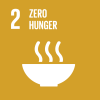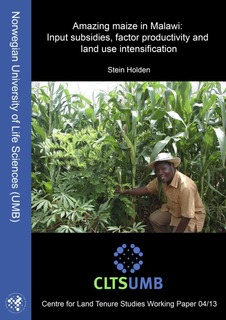
Volume of production per labour unit by classes of farming/pastoral/forestry enterprise size
Last updated on 1 February 2022
This indicator is currently classified as Tier II. The Food and Agriculture Organization of the United Nations (FAO) is the Custodian agency for this indicator.
Unit of measure: Value of production per labour day of small-scale food producers (in constant PPP USD 2011)
Why is this indicator important?
Small-scale food producers constitute the majority of food producers in many countries. Accordingly, enhancing sustainable food production systems and resilient agricultural practices of small-scale producers is important to combat hunger. Developing efficient and robust food production programs to boost agricultural productivity of small-scale producers is essential to maintain food supplies, increase incomes for poor and vulnerable groups, and feed the planet. It also contributes to strengthening rural development. Together with indicator 2.3.2., it defines small-scale producers and provides insights into how much they earn and produce.
By tracking the volume of production per labour unit by classes of farming/pastoral/forestry enterprise size, data collected for indicator 2.3.1 enables governments to shape, prioritize, and invest in policies and measures that effectively boost agricultural productivity, drive economic growth, and eliminate hunger in particular for small-scale food producers, including women, Indigenous Peoples, family farmers, and pastoralists.
How is the indicator measured and monitored?
Data and information on rural income, livelihoods, and labour inputs is limited in many countries. Moreover, information is usually collected on household level instead of food production unit level.
According to the metadata brief, sources of information are either agricultural surveys, or agricultural modules in integrated household surveys (e.g., LSMS-ISA) organized by the national statistical agencies, with the necessary support from the World Bank, FAO and other international agencies. FAO has been working on computing the indicator for eight developing countries in Sub-Saharan Africa based on data collected from the Living Standards Measurement Study-Integrated Surveys on Agriculture (LSMS-ISA) surveys. Results have not been disseminated yet. In collaboration with IFAD and the World Bank, FAO also promotes the Agricultural and Rural Integrated Surveys project (AGRISurvey) which aims to assist countries to collect relevant data on an annual basis.
By Anne Hennings, peer-reviewed by FAO.
Official indicator data
Volume of agricultural production of small-scale food producer in crop, livestock, fisheries, and forestry activities. The indicator is computed as a ratio of annual output to the number of working days in one year.
* Select "year" below to see the most recent data for more countries.
Other related indicators on Land Portal
In addition to the official indicator data, the following indicators provide information concerning the importance of agriculture in a given country or the distribution of land.
| Indicator | Min-Max Number of years |
Countries / Obs | Min / Max Value |
|---|---|---|---|
| Average size of holdings (ha) | |||
| Employees in Agriculture - Female (% of female employment) | |||
| Employment in Agriculture (% Total Employment) |
Kenyan Pastoralists Get Sh7.7 Billion World Bank Support
By: Kiarie Njoroge
Date: August 1st 2016
Source: AllAfrica.com / Daily Nation
Pastoralists are set to benefit from a Sh7.7 billion World Bank loan expected to ease losses related to drought and disease.
The financing is expected to cater for a range of activities including water provision, re-seeding of rangelands, animal vaccination and storing fodder to ensure increased yields for about 93,000 pastoralist households.
Co-composting: New take on traditional technology for better soils and sanitation
By: Marianne Gadeberg
Date: May 25, 2016
Source: IWMI
About 1.3 billion tons – that’s how much solid waste is generated in cities globally each year. By 2025, the number is expected to have almost doubled, reaching an estimated 2.2 billion tons. A lot of this waste is never collected and even less is treated and reused.
Women's Land Rights Can Help Grow Food Security
By Jolyne Sanjak
When land tenure experts like me write about the connection between land tenure and food security, we often focus on how secure rights to land tend to increase smallholder farmers’ productivity-enhancing investments. As studies in China, Thailand, Ethiopia, Uganda, and Ghana, among other countries, document—farmers with security of tenure are more likely to invest their finances and labor in improvements to their land.
Pagination
Effects of land tenure systems on resource-use productivity and efficiency in Ghana’s rice industry
This study examines the effects of land tenure systems on resource-use productivity and efficiency in the Upper East region of Ghana with data drawn from the Ghana Agricultural Production Survey. A stochastic frontier model is employed to analyse resource-use productivity and efficiency of the rice farms.
Amazing maize in Malawi : input subsidies, factor productivity and land use intensification
The paper uses three years of household farm plot panel data (2006-2009), covering six districts in central and southern Malawi to assess factor productivity and farming system development under the input subsidy program. All farm plots of the households were measured with GPS.
productivity of traditional rice–fish co-culture can be increased without increasing nitrogen loss to the environment
Although the traditional rice–fish co-culture system (RF) efficiently uses water and land resources, provides food security, and does not harm the local environment, it requires improvement because of its small scale and low fish yield.
Market imperfections and land productivity in the Ethiopian Highlands:
This study analyzes how market imperfections affect land productivity in a degraded low-potential cereal- livestock economy in the Ethiopian highlands. A wide array of variables is used to control for land quality in the analysis. Results of three different selection models were compared with least squares models using the HC3 heteroskedasticity-consistent covariance matrix estimator.
Does land fragmentation affect land productivity? Empirical evidence from Bulgaria
Land fragmentation is considered a major obstacle to the efficient use of land and other agricultural resources in Bulgaria. This study is concerned with formally testing the relationship between fragmentation of land plots and land productivity in the country.
Pagination
![]()

By 2030, double the agricultural productivity and incomes of small-scale food producers, in particular women, indigenous peoples, family farmers, pastoralists and fishers, including through secure and equal access to land, other productive resources and inputs, knowledge, financial services, markets and opportunities for value addition and non-farm employment
Indicator details
The indicator is conceptually clear, has an internationally established methodology and standards are available, but data is not regularly produced by countries.
Key dates:








